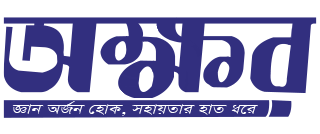Rich Dad Poor Dad” is a personal finance book written by Robert Kiyosaki that was first published in 1997. The book challenges traditional notions about money and investing and offers practical advice to help readers achieve financial independence.
The book is structured as a series of lessons that the author learned from two influential figures in his life – his biological father, referred to as his “poor dad,” and his best friend’s father, who he refers to as his “rich dad.” The two men had very different approaches to money, and Kiyosaki uses their teachings to illustrate the principles of wealth building.
The first lesson is about the importance of financial education. Kiyosaki argues that traditional education does not prepare people for financial success and that it is essential to educate oneself about money and investing in order to become wealthy. He describes how his “rich dad” taught him about money through real-world experiences and encouraged him to think creatively about ways to generate income.
The second lesson is about the difference between assets and liabilities. Kiyosaki defines an asset as something that puts money in your pocket, while a liability takes money out of your pocket. He stresses the importance of acquiring assets and minimizing liabilities in order to achieve financial freedom.
The third lesson is about the importance of mindset. Kiyosaki believes that the way people think about money has a significant impact on their financial success. He encourages readers to adopt a mindset of abundance rather than scarcity and think creatively about ways to generate income.
The fourth lesson is about the power of leverage. Kiyosaki explains how leverage can be used to increase wealth, but also warns of the dangers of excessive debt. He suggests using other people’s money to invest in income-producing assets, such as real estate and emphasizes the importance of understanding the risks involved.
The fifth lesson is about the importance of controlling one’s emotions. Kiyosaki argues that emotions can often lead people to make poor financial decisions. He advises readers to develop the discipline to control their emotions and think rationally about financial matters.
The sixth lesson is about building a team of advisors. Kiyosaki emphasizes the importance of surrounding oneself with knowledgeable and trustworthy advisors, such as accountants and attorneys, in order to make informed financial decisions.
The seventh lesson is about the importance of giving back. Kiyosaki encourages readers to use their wealth to make a positive impact on the world and to contribute to charitable causes.
The final lesson is about taking action. Kiyosaki believes that it is not enough to read about financial principles – one must take action in order to achieve financial success. He encourages readers to apply the lessons in the book and to take control of their financial future.
Throughout the book, Kiyosaki emphasizes the importance of financial literacy and taking control of one’s financial future. He argues that traditional notions of job security and the reliance on pensions are no longer valid and that it is essential to become financially independent in order to achieve long-term prosperity.
The book has been widely popular and has spawned a series of sequels and spin-off products, including games and seminars. However, it has also been criticized for promoting a simplistic view of wealth-building that may not be applicable to all readers.
Overall, “Rich Dad Poor Dad” offers a fresh perspective on personal finance and encourages readers to take an active role in their financial lives. The book’s emphasis on financial education, creative thinking, and taking action makes it a valuable resource for anyone looking to achieve financial freedom.
